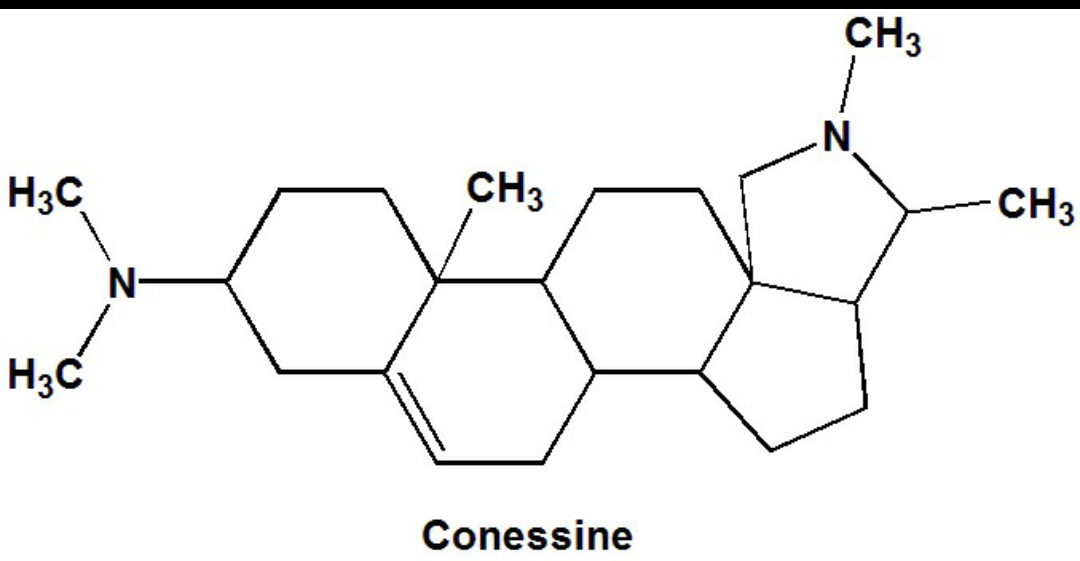Kurchi: Biological Source, Chemical constituents, Uses, Adultrants, Morphology and MCQ

KURCHI
1. Biological sources:
• Kurchi belongs to the Apocynaceae family.
• Kurchi bark consist of dried stem bark of Halarrhena antidysenterica(H.pubescens).
• It also known as Halorrhenna.
• The bark of kurchi is collected from the tree by making suitable transverse or longitudinal incision.
2. Morphological features :
• Kurchi is a shrub.
• It is a deciduous laticiferous shrub or small tree having height of 9-10 m.
• The bark is small and recurved both longitudinally and transversely.
• The thickness(6-12mm) or size of bark vary from piece to piece.
• The colour of bark is buff to reddish brown and it bears numerous prominent circular or transversely elongated horizontal lenticels and longitudinal wrinkles.
• The inner surface are of cinnamon-brown in colour.
• The thicker pieces are rugose and have numerous yellowish warts.
• The inner surface striated and it have pale yellow wood portions which are attached frequently.
• The taste is acrid and bitter.
• The odour is not distinct.
• Fracture ,brittle and splintery.
3. Chemical constituents :
• Kurchi have alkaloidal constituents in bark vary from 1.8% to 4.5% in concentration.
• Conessine is the main steroidal alkaloid vary from 20% to 30% in concentration.
• Conarrhimine, conimine, conamine, conessimine, norconessine, isoconessimine, kurchine and dimethyl conkurchine are other alkaloid which are present as chemical constituents.
• The bark also consist of gum, resin, tannin, lupeol and digitenol glycoside holadysone as chemical composition.
4. Uses :
• The bark of kurchi is used as stomachic,astringent, tonic and antidysenteric.
• It also have property of febrifuge and anthelmintic.
• It helps to treat dropsy by rubbing the bark over the body.
• It also helps to treat amoebic dysentery and diarrhea.
5. Adulteration : Wrightia tinctori adulterant of kurchi.
6. Multiple Choice Questions :
1. Kurchi belongs to the family
(a) Apocynaceae
(b) Asteraceae
(c) Lamiaceae
(d) Violaceae
2. The biological source of kurchi
(a) Leaves
(b) Stem
(c) Bark
(d) Flower
3. Height of kurchi shrub
(a) 6-7 m
(b) 9-10 m
(c) 5-6 m
(d) 2-3 m
4. The thickness of bark of kurchi vary from
(a) 4-10mm
(b) 5-10mm
(c) 6-12mm
(d) 4-6mm
5. The colour of bark of kurchi
(a) Yellow
(b) Browm
(c) Buff to reddish brown
(d) Red
6. Kurchi have chemical constituents
(a) Alkaloid
(b) Flavinoid
(c) Phenol
(d) All of the above
7. Chemical constituents of kurchi is/are
(a) Conimine
(b) Gum
(c) Resin
(d) All of the above
8. Kurchi used as
(a) Stomachic
(b) Astringent
(c) Anti-dysentric
(d) All of the above
9. Kurchi helps to treat
(a) Fever
(b) Asthma
(c) Dropsy
(d) Diabetes
10. Adulterant of kurchi
(a) Wrightia tinctori
(b) Black pepper
(c) Terpenes
(d) All of the above
7. ANSWERS:
1. Apocynaceae
2. Bark
3. 9-10 m
4. 6-12mm
5. Buff to reddish brown
6. Alkaloid
7. All of the above
8. All of the above
9. Dropsy
10. Wrightia tinctori
8. REFERENCE :
Evans W.C, Editors. Trease and Evans Pharmacognosy , New York, Saunders, Elsevier;2009, p. 414-415.